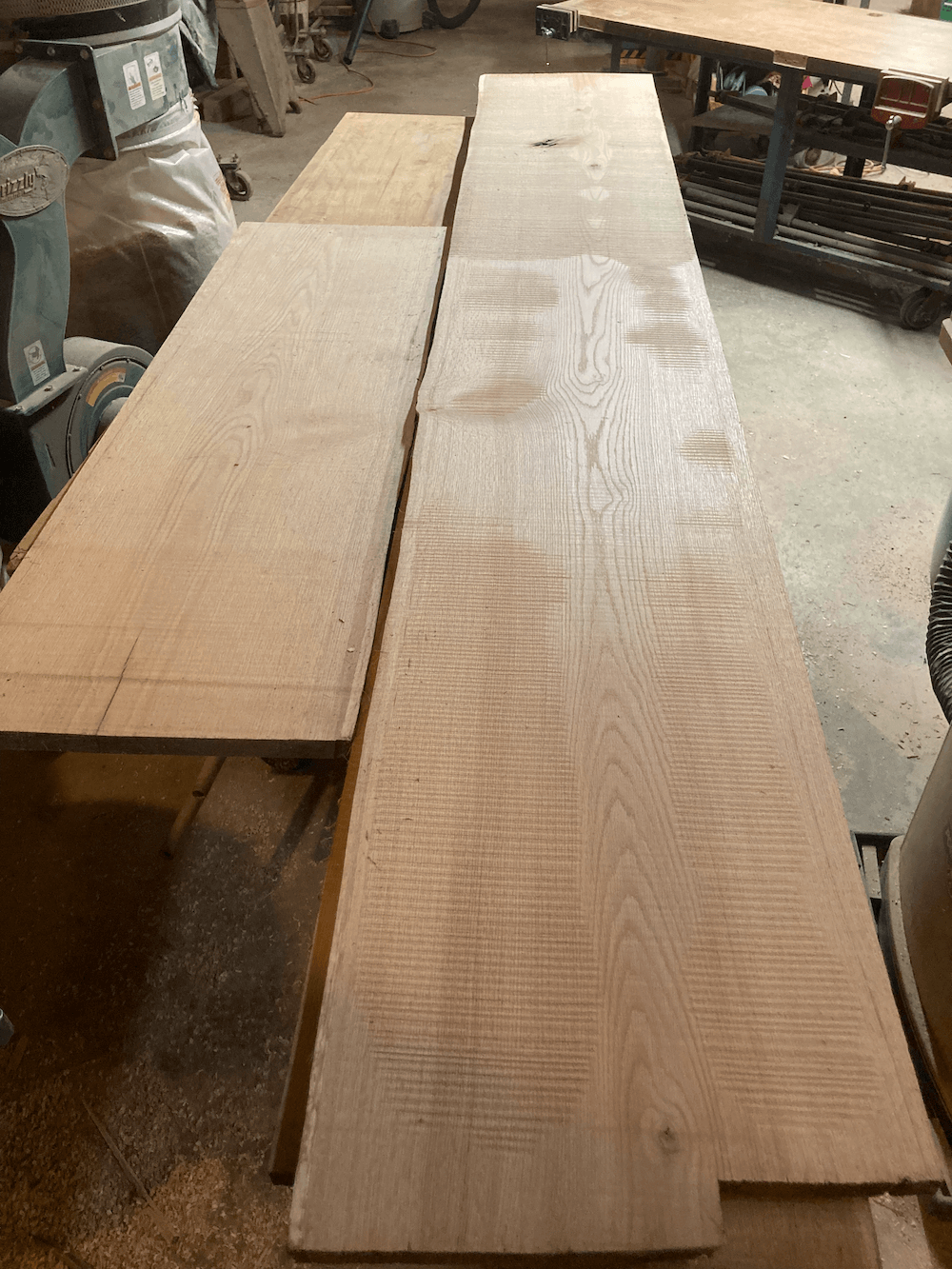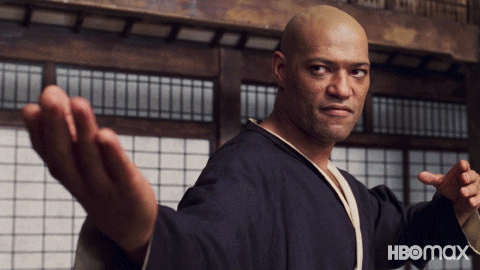Old Growth: Eating the best cuts
Hello! I’ve been busy working on a variety of small items (candle holders, a tray, spatulas) and reading some great books on work (Make Your Own Job by Erik Baker) and technology (AI Snake Oil by Arvind Narayanan and Sayash Kapoor). I’ve not been busy writing—at least nothing more than snippets of random thoughts, and nothing coherent. I suppose there are seasons, like all the sage people say, for different activities in our lives.
Below is an essay I wrote in March 2023 about labor, choices, and preserving some of the best of our resources to enjoy in our own lives.
I hope the next couple of weeks find you savoring, at least once (maybe a couple times?), some of the best cuts in your life. ❤️
Eating the best cuts
What do you sell and what do you save? More specifically, do you use the highest quality wood for your own personal projects or save them for work you’re going to sell?
Dad and I discussed this a couple weeks ago. It came up twice: First while picking materials for a set of shelves, and second during conversation while carrying the chosen lumber from the back of the shop to the work table.
The project was for my oldest child, who came to me earlier in the week, upset about how disorganized his stuff was. He said he was overwhelmed and thought I could make him something for his room that would help.
To wit: He needed solutions he thought could only be found in my shop. I’ve been trying to cultivate this belief in my kids for years.
When they need something fixed, they go to their dad, Josiah. When they need something built, they come to me. It’s how Josiah and I divide labor in our household (among the other tasks I don’t specialize in are filling soap dispensers, emptying the recycle bin, or regularly cleaning the litter box).
I decided to treat this as I would any potential client wanting to commission me to build something for them. During the decade prior to switching careers to woodworking, I did communications and marketing. Lots of interviewing, writing, and some in user experience design. Though I no longer make websites or do much marketing (as evidenced by even a cursory glance at my little business), I’ve been applying human-centered design to the initial stages of my woodworking.
So I did with my son what I do with any client: Try to place myself in his frame of mind. Try to understand how he’s seeing the world, what matters, what doesn’t, what styles he likes, what he doesn’t.
Mostly this consisted of me asking my kid questions, such as what was upsetting him? How does he feel when he’s in his room? How does he want to feel? What ideas does he have about improving the space? What is missing from the room that would make it feel peaceful, like a place he could relax?
It turns out that he is developing his father’s proclivity toward tidiness. And he didn’t have enough space to keep his books, toys, and general detritus organized, leading to stuff in messy piles.
So Josiah and I decided to renovate our kid’s closet, transforming it from 80s garish (wire shelving and puke peach colored walls) into stylish and usable. Which meant making shelves, which led me to Dad’s Red Oak lumber pile.
Red Oak, I’d read, is good for shelving because it is sturdy and not prone to sagging. The plans Josiah and I made called for four shelves: three that were 55” long x 11 3/4” and one at the same length but 24” wide, which could serve as a desk.
Dad showed me some beautiful 17” wide boards about 8’ or 10’ in length. I asked him if he wanted to save these for a different project, since they were quite nice. To which he replied, why wouldn’t I want the best wood for my grandchild? Well geez, Dad, when you put it that way of course let’s use them.
As we were carrying the boards to the work table, Dad told me about his friend who was selling some Black Walnut logs for around $1,000 a piece from a logger. The trees had been weakened in a wind storm a few years back and needed to come down. Dad said he’d even heard of other people selling logs sight unseen for $5,000; they were then shipped overseas and likely sold for a profit.
The friend mentioned to Dad that he could probably make a good bit of money selling logs as well. Dad’s farm is surrounded by woods and he has quite a few choice logs from trees that have fallen or need to be cut. But Dad told him that he’d prefer to save those logs. I asked him why.
Dad used to be a farmer, part of which included raising cows on organic fields, and selling the meat. He said when he was farming, he thought about whether to sell or eat the best cuts. Obviously he could get the most money from selling them, but he said he made sure to save some as well. The labor of his life was intense: raising animals, providing them with access to good lives eating high quality food, keeping the farm going, working in the fields (not to mention fixing all the machines that broke).
Exchanging every good outcome from that labor for money is a trade, as far as my dad is concerned, not worth making.
It’s not all about money. Even as money is important and necessary for many things. But there is a lot besides money that makes for a rich life. Good relationships, for one (the directors of Harvard’s longevity project make a strong argument that relationships are the whole ball game, where health and happiness are concerned).
The opportunity to share the work you love with people whose opinions matter.
The chance to eat the nicest cuts. Maybe not every single one, but certainly more than a few.
Building shelves for my son’s project took two days—one day to find, plane, cut, and glue up the lumber. One day for finish cuts and sanding.
On the second day we had help from my second child, who is handy despite her hands being tiny.

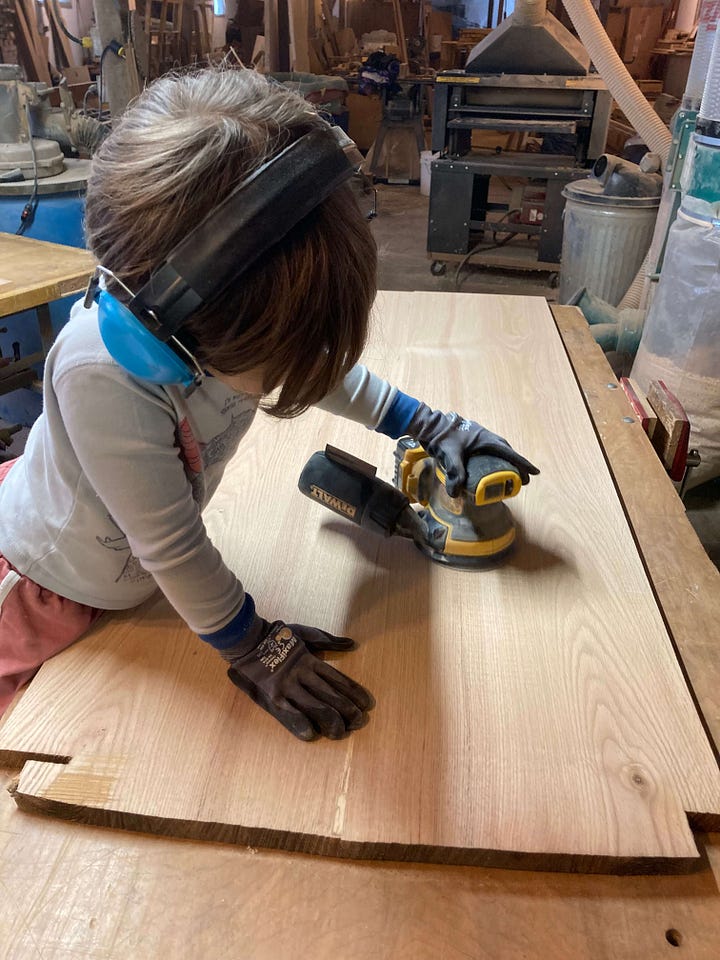
If you’ve seen the movie the Matrix, do you remember the scene where Morpheus is training Neo how to fight in the dojo? There is a pause in the fight as Neo composes himself after getting smacked down, and Morpheus takes a fighting stance, arms coiled yet loose, stretched in front of him, hands open and fingers beckoning Neo to come at him, to engage in the fight one more time.
Dad was showing my kid the 25” planer we were going to use to plane the desktop material (we’d glued up the boards the day before and were planing to a final thickness of an 1”). Generally when we are planing lumber, Dad handles feeding material in and I catch it on the out-feed.
“When I want your mom to bring a board back to me,” Dad told my kid before turning on the planer, “I do this.”
He took a fighting stance and beckoned to me. My child, always one for a joke, got into it and spent a good deal of time beckoning for boards the rest of the morning.
One reason I love having my children in the shop with me is that it’s a way of sharing some of the best cuts of the day with them.
Often it’s easy to bring our best selves to work. In the past for me that was the office, where my prefrontal cortex was in high gear making me mind my manners and pass as a civilized person. In the shop those kinds of pretensions are unnecessary and I can just be my uncouth self, but I still end the day tired, whether from manipulating fractions or hauling heavy lumber.
My best self is brought to the work I do, and it’s too easy to bring my tired self or distracted self into the rest of my day, which is generally the time I spend with family.
But if those Harvard guys are right, that’s a backwards way to live. Obviously I want to do my best work for others—it’s a privilege to get to make furniture for people—but not at the expense of giving what’s left over to those I love most.
I hope my kids can say that I saved the best cuts for them.
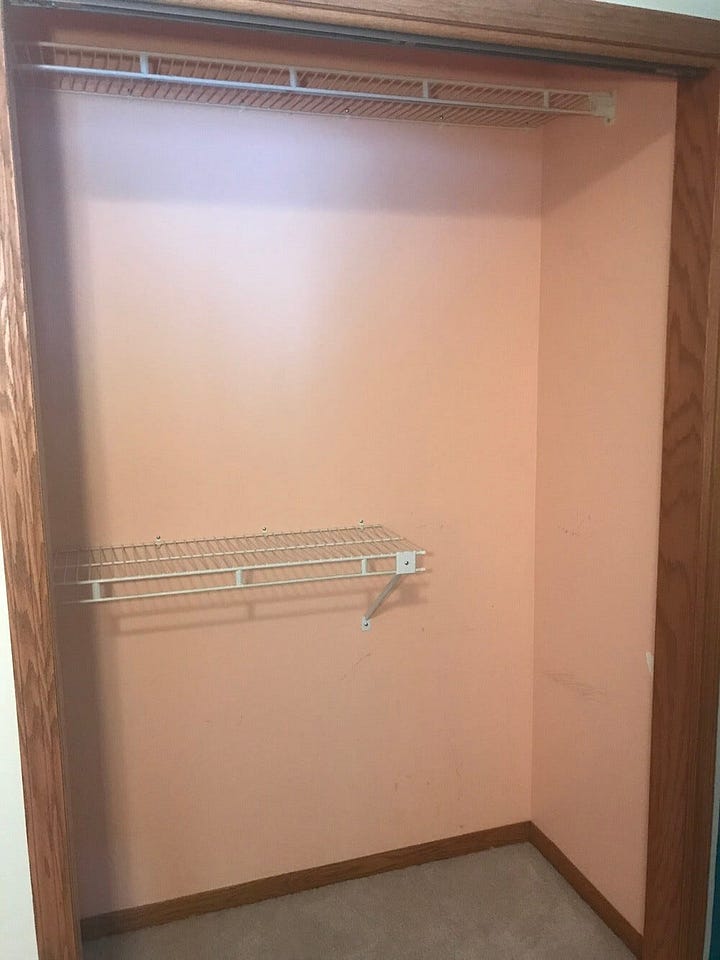
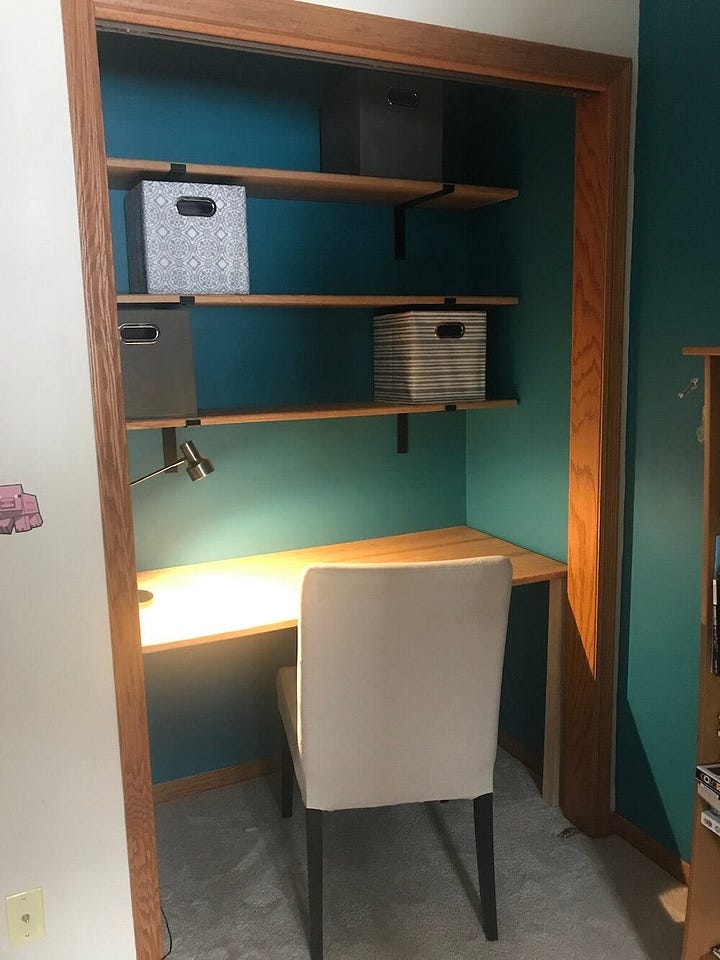
P.S.
I got to try a technique I read about in Fine Woodworking about using blocks (instead of butterfly keys) to shore up cracks. As someone learning woodworking in an informal way, I’ve found personal projects are great opportunities to try new skills. I’m champing at the bit for another kid to offer a complaint about their room.
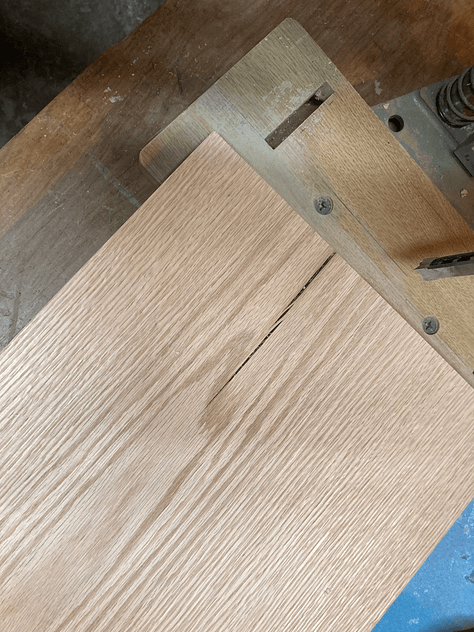

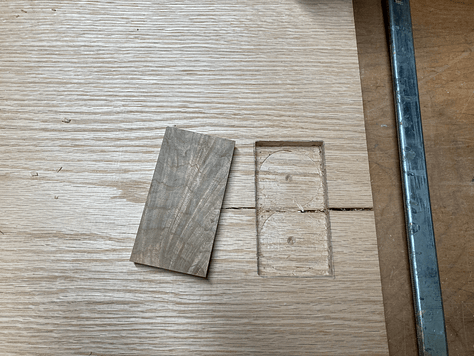


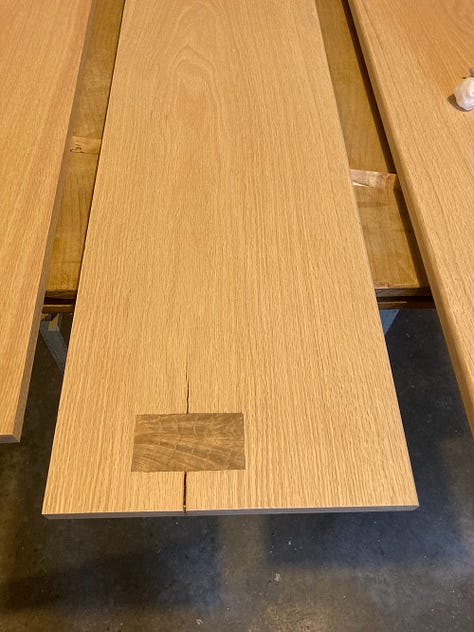
I read an interesting essay from Bruce Feiler who writes The Nonlinear Life about how the gap between women’s and men’s household labor is shrinking, as more men are contributing more at home since the pandemic and it shows no sign of abating. I’d like to think that my supreme lack of domestic labor is helping this trend.






